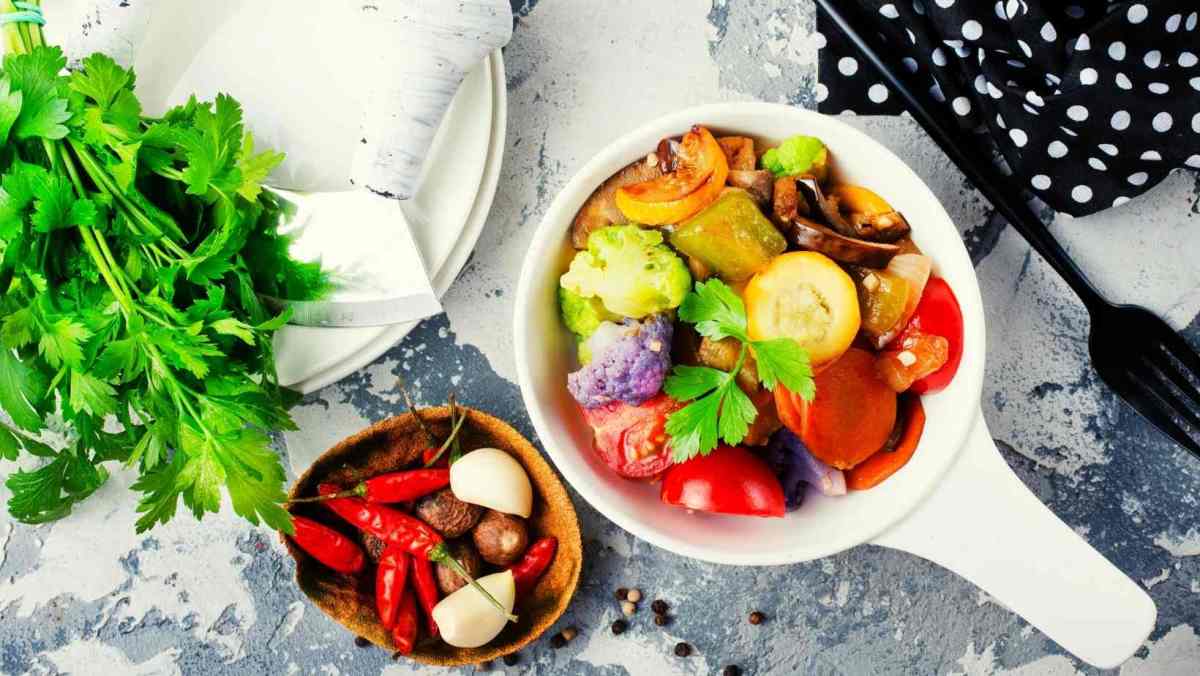Indulge your sweet tooth without compromising your health! This guide unveils the secrets to baking delicious, heart-healthy treats that are as satisfying as they are nutritious. Discover clever ingredient swaps, innovative techniques, and delectable recipes that transform everyday baking into a guilt-free pleasure. Prepare to embark on a culinary journey where wholesome ingredients meet irresistible flavors, resulting in baked goods that nourish your body and delight your senses.
We’ll explore simple substitutions that dramatically reduce saturated fats and added sugars, enhancing the nutritional profile of your favorite desserts. Learn how to maintain texture and sweetness using natural alternatives, creating light, fluffy cakes, cookies, and muffins that are both healthy and heavenly. From swapping refined flour for whole grains to mastering techniques that minimize added fats, this guide provides a comprehensive roadmap to baking better-for-you treats that you’ll love.
Heart-Healthy Ingredient Swaps
Baking doesn’t have to mean sacrificing flavor for health. By making smart ingredient swaps, you can create delicious treats that are also kinder to your heart. This involves replacing ingredients high in saturated and trans fats, refined sugars, and refined grains with healthier alternatives that offer similar functionality but with improved nutritional profiles. These substitutions can significantly reduce the risk of heart disease while maintaining the delightful textures and tastes you expect from your favorite baked goods.
Heart-Healthy Ingredient Substitutions
Making healthier choices in baking is easier than you might think. The following table details common baking ingredients and their heart-healthy counterparts, highlighting the nutritional benefits of each swap. Remember to adjust quantities slightly based on the specific recipe and the moisture content of the substitute.
| Unhealthy Ingredient | Healthier Alternative | Nutritional Difference | Baking Considerations |
|---|---|---|---|
| Butter (saturated fat) | Unsweetened Applesauce | Applesauce provides fiber and natural sweetness, reducing saturated fat intake. | May require slight adjustments to liquid amounts in the recipe. |
| White Sugar (refined carbohydrates) | Honey or Maple Syrup | Honey and maple syrup offer antioxidants and a slightly different flavor profile, but still contain significant sugar. Use sparingly. | May slightly alter the final texture and browning. |
| All-Purpose Flour (refined grains) | Whole Wheat Flour | Whole wheat flour provides more fiber, vitamins, and minerals compared to refined flour. | Results in a denser, slightly more crumbly texture. May require adding a bit more liquid. |
| Vegetable Shortening (trans fat) | Avocado | Avocado adds healthy monounsaturated fats and creamy texture. | Adds a subtle avocado flavor; best suited for recipes where this complements the overall taste. |
| Refined Oils (high in omega-6 fatty acids) | Olive Oil | Olive oil is rich in monounsaturated fats and antioxidants. | Can impart a distinct flavor, so consider the overall recipe profile. |
Recipes with Healthy Fat Substitutions
These recipes demonstrate the versatility of using healthier fats like avocado and applesauce in baking.
Avocado Chocolate Chip Cookies
Imagine a rich, decadent chocolate chip cookie, but made healthier with creamy avocado. The avocado adds moisture and a subtle richness that perfectly complements the chocolate chips, creating a surprisingly delightful texture. The vibrant green hue of the avocado is barely noticeable in the final baked cookie, yielding a treat that is both delicious and good for the heart. The substitution of avocado for butter significantly reduces the saturated fat content while maintaining a moist and chewy cookie.
Applesauce Oatmeal Muffins
These muffins are a delightful blend of wholesome oats and subtly sweet applesauce. The applesauce replaces oil or butter, resulting in moist, tender muffins that are bursting with flavor. The light brown color of the applesauce subtly blends with the oats, creating a naturally appealing appearance. The added fiber from the applesauce and oats contributes to a more satisfying and filling muffin.
Avocado Brownies
Picture intensely fudgy brownies, their deep, dark color hinting at the rich chocolate within. But instead of the usual butter, these brownies feature the surprising addition of avocado. The avocado provides a velvety texture and adds moisture, creating brownies that are incredibly rich and decadent without the excess saturated fat. The deep brown color of the brownies beautifully contrasts with the lighter green hue of the avocado, which is almost entirely masked by the intense chocolate flavor.
Impact of Whole Grains on Baked Goods
Substituting refined flour with whole wheat flour significantly enhances the nutritional value of baked goods. Whole wheat flour, unlike refined flour, retains the entire grain kernel, including the bran and germ. This translates to a higher content of dietary fiber, vitamins (especially B vitamins), minerals (like iron and magnesium), and antioxidants. The increased fiber content contributes to improved digestive health and can help regulate blood sugar levels, which is particularly beneficial for heart health. While whole wheat flour can result in a slightly denser and more crumbly texture compared to refined flour, this can often be addressed by adjusting the liquid content or adding binding agents like eggs or flaxseed meal. The nutritional benefits far outweigh the minor textural differences, creating baked goods that are both delicious and heart-healthy.
Reducing Sugar Content Without Sacrificing Flavor

Reducing sugar in baked goods without compromising taste or texture is achievable through careful ingredient substitution and baking technique adjustments. The key lies in understanding how sugar contributes to both sweetness and the structural integrity of your desserts, and then finding suitable replacements that mimic its multifaceted role. Natural sweeteners offer a delicious and heart-healthy alternative to refined sugar, allowing you to enjoy guilt-free indulgence.
Reducing sugar content necessitates a nuanced approach, going beyond simple substitution. It involves understanding the role sugar plays in texture and moisture retention, and employing techniques to compensate for its absence. Successful sugar reduction often involves combining different strategies for optimal results.
Recipes Using Natural Sweeteners
Three delectable heart-healthy dessert recipes, each showcasing the versatility of natural sweeteners, follow. These recipes demonstrate how to create satisfyingly sweet treats without relying on refined sugars.
Recipe 1: Apple Cinnamon Oat Bars with Applesauce Sweetener
- Preheat your oven to 350°F (175°C). Grease and flour a 9×13 inch baking pan. Imagine the warm, golden-brown bars waiting to be enjoyed.
- In a large bowl, combine 1 ½ cups rolled oats, ½ cup whole wheat flour, ½ teaspoon baking soda, 1 teaspoon cinnamon, and ¼ teaspoon salt. The aroma of cinnamon and oats fills the kitchen as you mix.
- In a separate bowl, whisk together ½ cup unsweetened applesauce, ¼ cup maple syrup, 1 large egg, and 1 teaspoon vanilla extract. The smooth, rich mixture promises a moist and flavorful bar.
- Add the wet ingredients to the dry ingredients and mix until just combined. Do not overmix; a few lumps are okay. Picture the batter, a rustic blend of earthy tones.
- Spread the batter evenly into the prepared pan. The batter, thick and inviting, settles into its baking pan.
- Bake for 25-30 minutes, or until a toothpick inserted into the center comes out clean. The kitchen warms with the scent of baking apples and cinnamon.
- Let the bars cool completely in the pan before cutting into squares. The bars, golden and fragrant, await their cooling period.
Recipe 2: Banana Chocolate Chip Muffins with Mashed Banana Sweetener
- Preheat your oven to 375°F (190°C). Line a 12-cup muffin tin with paper liners. Envision the delightful, miniature cakes ready to emerge from the oven.
- In a large bowl, mash 2 ripe bananas until smooth. The sweet, fragrant banana puree forms the base of the batter.
- Add ½ cup whole wheat flour, ¼ cup oat flour, 1 teaspoon baking powder, ½ teaspoon baking soda, and ¼ teaspoon salt to the mashed banana. The dry ingredients are gently incorporated into the sweet, creamy mixture.
- Stir in ¼ cup unsweetened applesauce, 1 large egg, 1 teaspoon vanilla extract, and ½ cup dark chocolate chips. The batter becomes rich and decadent, with chocolate chips nestled within.
- Fill the muffin cups about ¾ full. The batter, dark and speckled with chocolate, fills the muffin cups.
- Bake for 18-20 minutes, or until a toothpick inserted into the center comes out clean. The muffins bake, their tops turning a beautiful golden brown.
- Let the muffins cool in the tin for a few minutes before transferring them to a wire rack to cool completely. The muffins, moist and fragrant, cool gently.
Recipe 3: Stevia-Sweetened Berry Cobbler with a Crumble Topping
- Preheat your oven to 350°F (175°C). Grease a 9-inch baking dish. Picture the warm, bubbly cobbler, ready to be served.
- In a large bowl, combine 4 cups mixed berries (strawberries, blueberries, raspberries), 2 tablespoons lemon juice, and 2 packets of stevia (adjust to your sweetness preference). The vibrant berries are gently combined with a touch of lemon and stevia.
- For the crumble topping, combine ½ cup whole wheat flour, ¼ cup rolled oats, ¼ cup chopped nuts (almonds or walnuts), 2 tablespoons coconut oil, and 1 packet of stevia. The crumble topping, a mixture of nutty and sweet ingredients, is prepared.
- Pour the berry mixture into the prepared baking dish. The colorful berries form a vibrant layer in the baking dish.
- Sprinkle the crumble topping evenly over the berries. The crumble topping creates a golden, rustic crust.
- Bake for 30-35 minutes, or until the topping is golden brown and the berries are bubbly. The cobbler bakes, releasing its delightful aroma.
- Let the cobbler cool slightly before serving. The warm cobbler, with its sweet and slightly tart berries, awaits to be enjoyed.
Methods for Reducing Sugar Without Compromising Sweetness and Texture
Several techniques can be employed to reduce sugar in baked goods while maintaining their appealing sweetness and texture. These methods often work synergistically, providing the best results.
- Increase the amount of fruit puree: Fruit purees, such as apple, banana, or pumpkin, add natural sweetness and moisture, reducing the need for added sugar. Imagine the vibrant colors and natural sweetness enhancing your baked goods.
- Use spices to enhance flavor: Spices like cinnamon, nutmeg, and ginger can mask the reduced sweetness and add depth of flavor, creating a more complex taste profile. Picture the warm, comforting flavors complementing the sweetness.
- Employ sugar substitutes strategically: Stevia, erythritol, and monk fruit are low-calorie alternatives that can be used to supplement the sweetness provided by fruit purees or other natural sweeteners. These sugar substitutes contribute to the overall sweetness while maintaining the desired taste.
- Adjust baking time and temperature: Reducing sugar often leads to a moister product; adjusting the baking time and temperature can prevent over-baking and maintain the desired texture. The process of baking is adjusted to compensate for the reduced sugar content.
- Add fat strategically: Fats, such as butter or oil, contribute to moisture and tenderness. Increasing the fat slightly can compensate for the reduced sugar and maintain a soft texture. The richness of the fat balances the reduced sweetness and adds to the texture.
Comparison of Baked Goods Made with Different Sugar Substitutes
The taste and texture of baked goods vary depending on the sugar substitute used. Stevia, for instance, has a slightly bitter aftertaste for some, while erythritol offers a cleaner, more sugar-like sweetness. Fruit purees contribute moisture and a natural sweetness but can alter the overall texture, sometimes resulting in a denser product. Careful experimentation and preference play a key role in choosing the best substitute for each recipe. The comparison reveals the subtle nuances in flavor and texture, offering a spectrum of choices for bakers.
Recipe and Step-by-Step Guide for a Single Heart-Healthy Treat
This recipe provides a detailed guide for baking a single, delicious, and heart-healthy bran muffin. We’ll focus on using whole-wheat flour, reducing added sugar, and incorporating heart-healthy fats to create a nutritious and satisfying treat. The process is designed to be easily adaptable for larger batches if needed.
This recipe emphasizes simplicity and visual clarity, guiding you through each step of the baking process. The result is a moist, subtly sweet bran muffin with a delightful texture. Observe the color and consistency changes throughout the process to ensure optimal results.
Ingredients for One Heart-Healthy Bran Muffin
Precise measurements are crucial for consistent baking results. The following quantities are specifically designed for a single muffin, ensuring minimal waste and perfect portion control.
| Ingredient | Quantity |
|---|---|
| Whole wheat flour | 1/4 cup |
| Bran cereal (high-fiber) | 1 tablespoon |
| Unsweetened applesauce | 1 tablespoon |
| Egg white | 1 large |
| Milk (skim or almond) | 1 tablespoon |
| Honey or maple syrup | 1 teaspoon |
| Baking powder | 1/4 teaspoon |
| Cinnamon | Pinch |
| Optional: 1/4 teaspoon vanilla extract |
Step-by-Step Baking Process
The following steps provide a visual guide to baking your heart-healthy bran muffin. Pay close attention to the texture and color changes at each stage.
- Combining Dry Ingredients: Begin by gently combining the whole wheat flour, bran cereal, baking powder, and cinnamon in a small bowl. The mixture will have a light brown hue, with the bran adding visible texture. The consistency will be dry and powdery.
- Wet Ingredient Preparation: In a separate bowl, whisk together the egg white, milk (or almond milk), applesauce, and honey (or maple syrup). The mixture will be pale yellow and slightly viscous. The consistency will be smooth and pourable.
- Combining Wet and Dry: Gradually add the wet ingredients to the dry ingredients, mixing gently until just combined. Avoid overmixing, as this can lead to a tough muffin. The batter will be slightly thick, with visible specks of bran. The color will be a pale, warm beige.
- Muffin Tin Preparation: Lightly grease a single-serving muffin cup or ramekin with cooking spray or a small amount of oil. This will prevent sticking and ensure easy removal.
- Baking the Muffin: Pour the batter into the prepared muffin cup. Place the muffin cup in a preheated oven at 350°F (175°C). The baking time will be approximately 15-20 minutes, or until a toothpick inserted into the center comes out clean. During baking, the muffin will rise, becoming lighter in color and developing a slightly golden-brown crust.
- Cooling and Serving: Once baked, carefully remove the muffin from the oven and allow it to cool in the cup for a few minutes before transferring it to a wire rack to cool completely. The finished muffin will have a moist crumb, a slightly firm texture, and a pleasant aroma.
Troubleshooting Common Baking Problems
Addressing potential issues proactively ensures successful baking. Here are some common problems and their solutions.
- Muffin is too dry: This may be due to overbaking or insufficient moisture in the batter. Next time, reduce baking time slightly and ensure the wet ingredients are properly combined. You can also try adding a tiny bit more milk.
- Muffin is too dense: Overmixing the batter can lead to a dense muffin. Ensure you only mix until the ingredients are just combined. Also, make sure your baking powder is fresh.
- Muffin sticks to the cup: Insufficient greasing of the muffin cup is the likely cause. Next time, use more cooking spray or oil.
- Muffin cracks on top: This is often caused by overbaking or a batter that is too wet. Adjust baking time and reduce liquid if necessary.
Baking heart-healthy treats doesn’t mean sacrificing taste or enjoyment. By embracing the techniques and recipes Artikeld in this guide, you can create delightful desserts that are both delicious and beneficial for your heart. The journey towards healthier baking is filled with exciting discoveries – from the surprising versatility of avocado in brownies to the subtle sweetness of naturally-derived sweeteners. So, roll up your sleeves, gather your ingredients, and prepare to experience the joy of baking guilt-free, heart-healthy delights that will tantalize your taste buds and nourish your well-being. The transformation of your baking repertoire begins now.
Question Bank
Can I freeze heart-healthy baked goods?
Yes, many heart-healthy baked goods freeze well. Wrap them tightly in plastic wrap and then foil to prevent freezer burn. Thaw overnight in the refrigerator.
What are some good heart-healthy toppings for baked goods?
Consider using fresh berries, a sprinkle of nuts (like walnuts or almonds), a light dusting of cinnamon, or a drizzle of dark chocolate (70% cacao or higher).
How can I make my heart-healthy baked goods even more nutritious?
Incorporate additional fruits, vegetables (like grated zucchini or carrots), or whole grains into your recipes. Adding seeds like chia or flax also boosts nutritional value.
Are all sugar substitutes created equal?
No, sugar substitutes vary in their impact on blood sugar levels and overall health. Research the specific type you are using to understand its potential effects.


